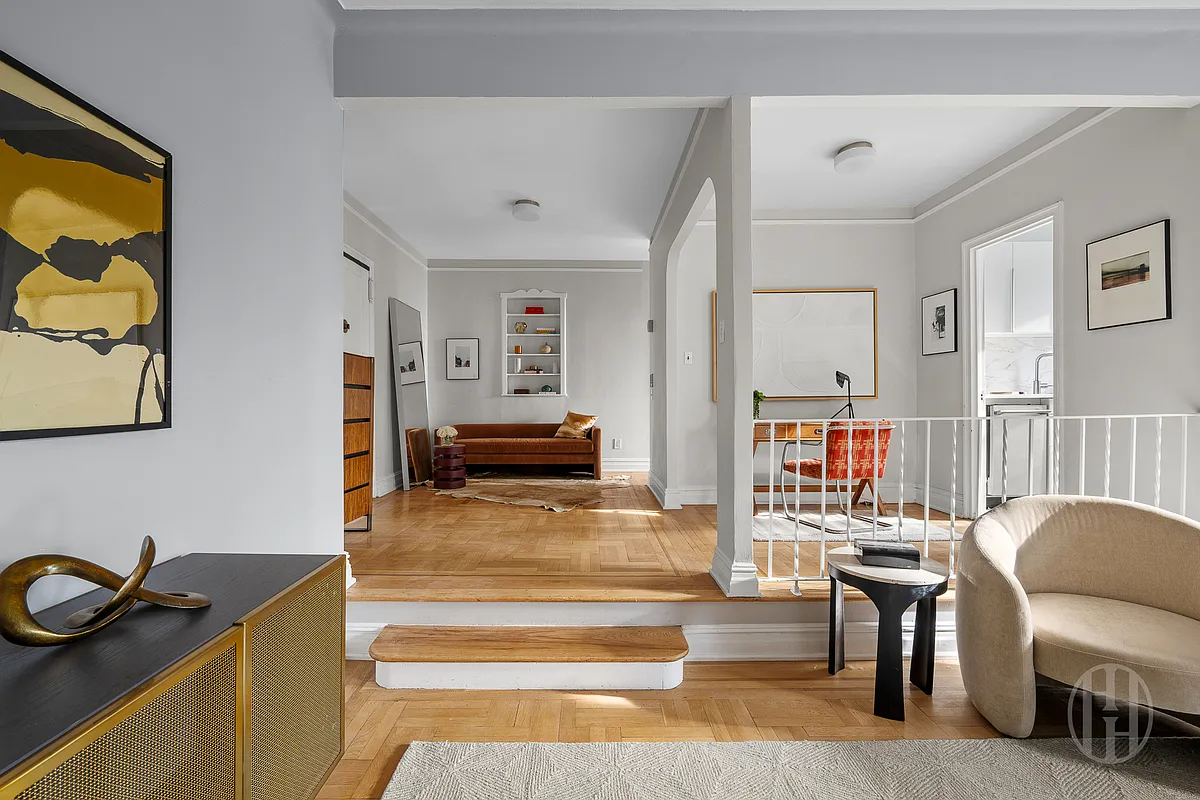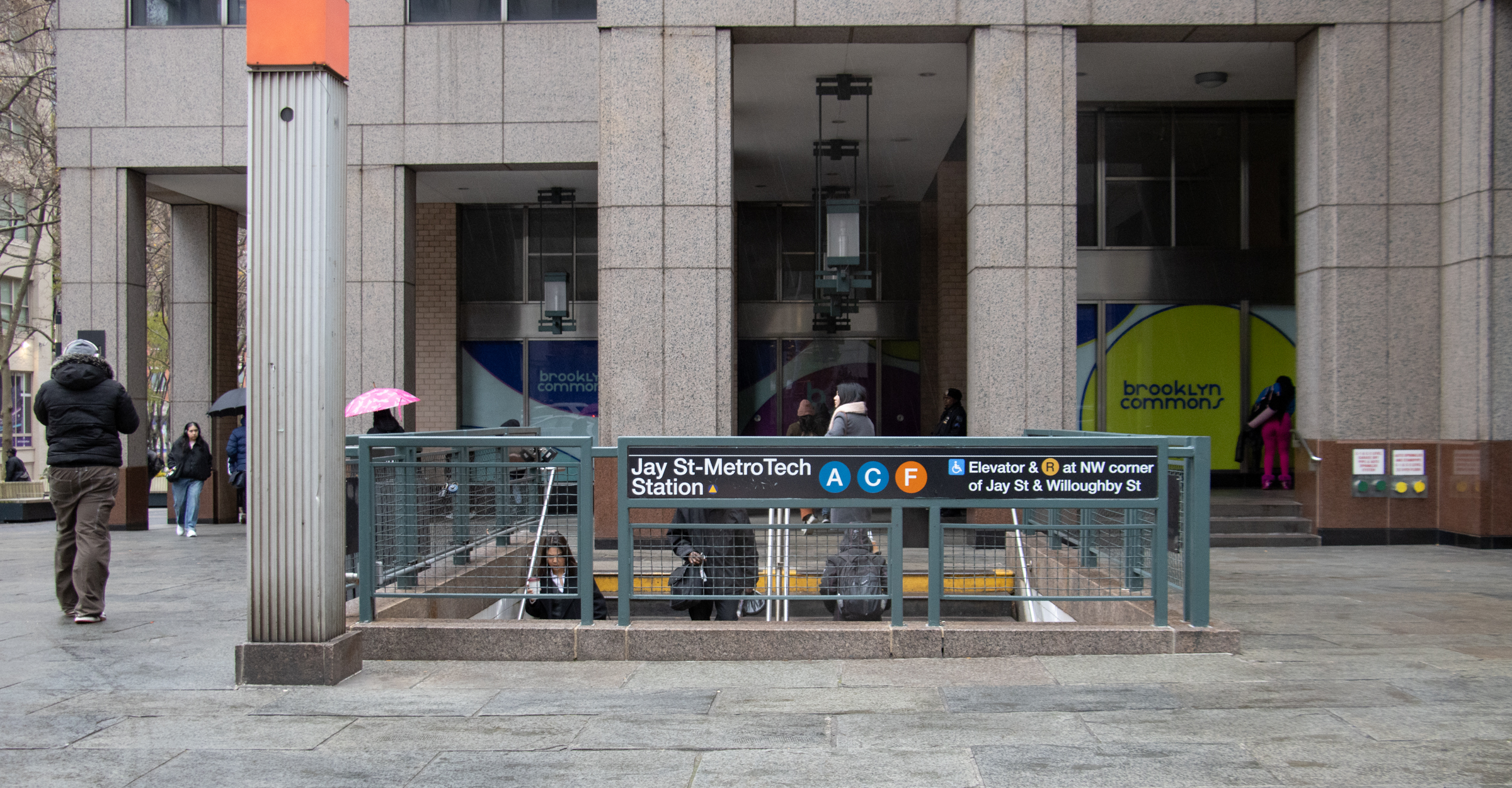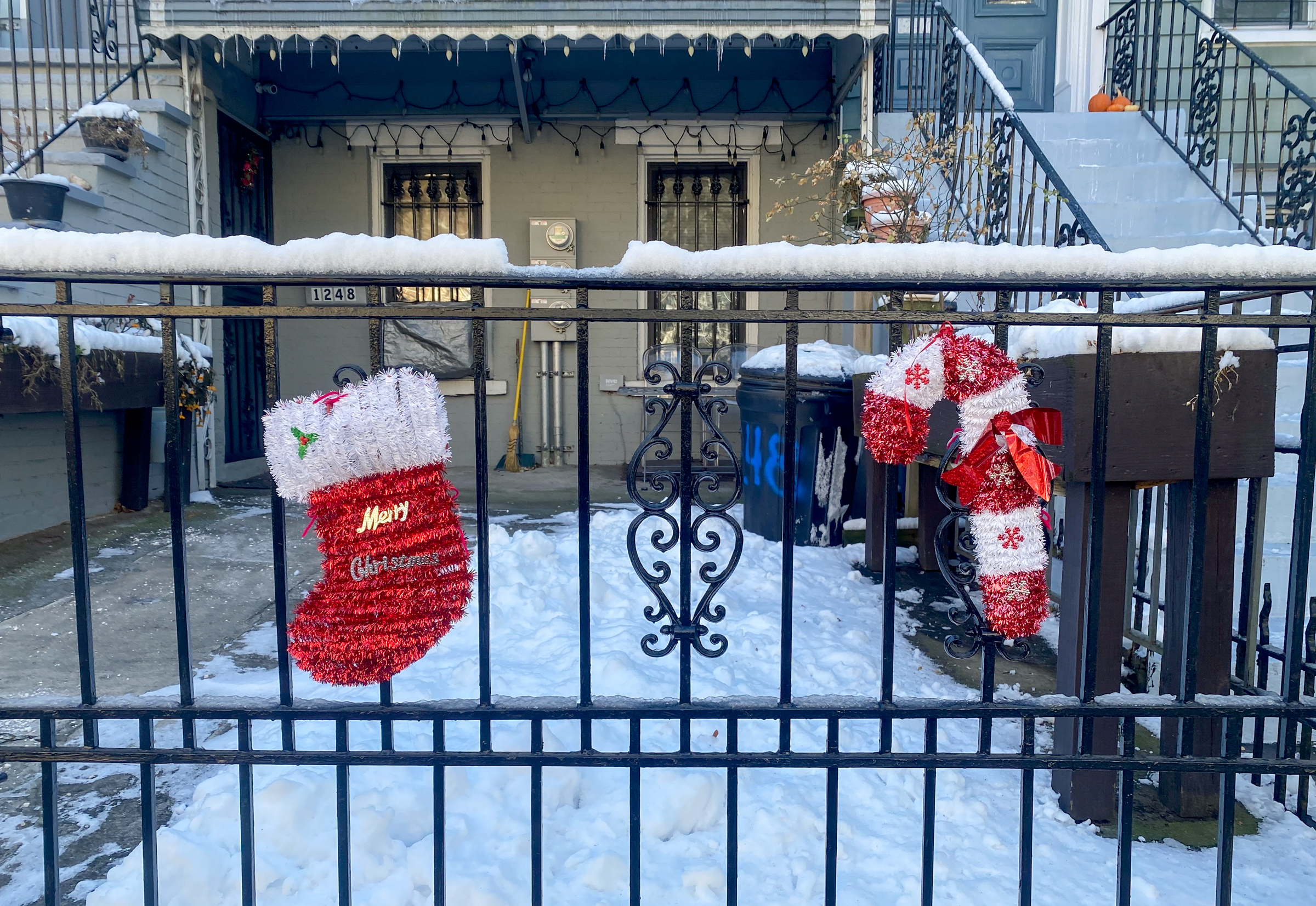Officers' Row: Let's Have Our Cake and Eat It Too
For an event that was whose main purpose seemed to be to present the destruction of Officers’ row as a fait accompli, last night’s public hearing had just the opposite effect. A study by the Army Corps of Engineers of the structural integrity of the ten nineteenth century houses was made available for the public…


For an event that was whose main purpose seemed to be to present the destruction of Officers’ row as a fait accompli, last night’s public hearing had just the opposite effect. A study by the Army Corps of Engineers of the structural integrity of the ten nineteenth century houses was made available for the public to view last night for the first time, and even a cursory look had everyone we spoke to questioning the BNYDC‘s position that the houses are not worth saving; what’s more, there were some creative ideas for alternative designs floated during the public milling-about period that would enable the preservation of Officers’ Row while still providing a large on-site supermarket.
Unbeknownst to us, the 7 o’clock public event was preceeded by a 6:15 press conference where a number of politicians (including Marty Markowitz and Letitia James, above) and Navy Yard officials voiced their support for the creation of a supermarket on the site and did their best to parrot the party line that it is economically unfeasible to save Officers’ Row in the process. To wit:
Hakeem Jeffries:“While historic preservation of this site is a respectable goal, it appears that the deterioration of Admiral’s Row has been so extensive over the years that rehabilitation of the site would be extremely cost prohibitive.”
David Yassky: “After intensive study, responsible preservation entities at every level have concluded that these structures cannot be preserved without a prohibitively high financial commitment.”
Albert Vann: “I am very much in favor of preserving the rich heritage of historical buildings in Brooklyn, but not at the expense of meeting the needs of the people of Brooklyn for fresh produce and jobs.”
If it sounds like they’re all reading from the same script, they are. (For some reason we were erroneously sent an email from the BNYDC soliciting support letters and providing the same talking points that appear in all the submissions.) The problem with the political rhetoric like the quotation from Council Member Vann, in our view, is that it frames the issue as an either-or proposition, and in so doing tries to press familiar class and race buttons that do nothing to further meaningful discussion. This tactic tries to equate an interest in preserving the existing structures with wanting to deprive lower-income people of fresh vegetables. The truth is that this is not an either-or issue. No one on the preservation side of the debate that we’ve talked to is against building a supermarket. If you were a resident of one of the nearby projects, however, that’s certainly the impression you’d get from listening to the public leaders.
The Army Corps of Engineers study that was available for review last night (though not for distribution) put the cost of restoring the ten buildings at about $25 million, significantly less than what the BNYDC has been telling people; what’s more, according to one of the engineers manning the tables, eight of the ten houses are still structurally sound. Additionally, even a back-of-the-envelope sketch like the one above from Pratt’s Brent Porter shows that there may be much more creative solutions that let the community have its cake and eat it too. The BNYDC has done a commendable job at restoring and adaptively reusing much of the rest of the Navy Yard to date and has even more impressive plans for the future; unfortunately, we don’t think that means it should get a free pass to tear Officers’ Row down without a transparent and public process of evaluation. This could be an opportunity to do something really exciting with the six acres of land (and one that takes into consideration factors like what kind of market options may present themselves on nearby Myrtle Avenue). How about a design competition? How about soliciting private funds to lessen any extra burden of preservation? This is too important to let short-term political and economic expediency be the only factors in a decision-making process.
Update: It was just brought to our attention that in his letter yesterday to local, state and federal authorities, Navy Yard president Andrew Kimball did qualify his unambiguous position about a lack of preservation restrictions on the transfer by saying that the renderings that have been circulating are not set in stone:
BNYDC will work with local leaders to organize a design charette with the community in early 2008 to obtain input on the design criteria that should be included in a the Request for Proposal that BNYDC intends to issue shortly thereafter. BNYDC will follow the model established by HPD on the Brig site for community input on the RFP process.
Officers’ Row Preservation Coming to a Contentious Head [Brownstoner]
For Officer’s Row, Supermarket All But Certain [Brownstoner]
Photo of James and Markowitz by Adrian Kinloch.








Sorry, accidentally hit enter before finishing, sorry for the double post.
Preservationista
Ella, you tried that one before, too. If there are plans for supermarkets and parking lots afoot, then there is money lined up. Why is everyone so afraid of good design, or a good idea coming from outside of the cabal that is hell bent on razing the Row and building the store and parking lot? What are you afraid of?
I am not privy to the inner machinations of the Yard, it’s development wing, or the City. But it seems to me that some creative thinking could conceivibly work towards saving money, and making available funds go farther while meeting the twin goals of saving history, and providing necessary services. Since building a supermarket or mall is the function of private funding, the money is there, and the city has the wherewithal to chip in when they want to – see AY above.
Here’s what you do – have a contest for the best mixed use proposal, with at least rudimentary renderings, ala the contest for the 9/11 memorial.
When the final design is voted on and a winner chosen, put together a team of architects, planners, designers, etc to come up with the final plans, models, etc, etc.
Since Pratt is right there, set up a program with them in conjunction with the Navy Yard and the city to design a curriculum where preservation techniques are taught and the Row is the workshop. Give college credit for hands on restoration. Open it up to interested civilians, especially local minority youth, and teach valuable skills while getting the job done. If Pratt isn’t interested, call Columbia U. They have an Historic Preservation program already in place.
Just as St.John’s Cathedral was a workshop for stone masons, the Row could serve a similar function. College credit = interested and cheap workers=training skilled workers and employing community members=saving money.
The supermarket gets built, portions of the Row are saved and reused as per the winning design. The city looks good, the developers look good, the community gets a market, and perhaps a museum, or community center, or whatever public use is deemed the winner.
Ok, I’m sure I left out some important steps, but what’s wrong with the basic premise?
Ella, you tried that one before, too. If there are plans for supermarkets and parking lots afoot, then there is money lined up. Why is everyone so afraid of good design, or a good idea coming from outside of the cabal that is hell bent on razing the Row and building the store and parking lot? What are you afraid of?
I am not privy to the inner machinations of the Yard, it’s development wing, or the City. But it seems to me that some creative thinking could conceivibly work towards saving money, and making available funds go farther while meeting the twin goals of saving history, and providing necessary services. Since building a supermarket or mall is the function of private funding, the money is there, and the city has the wherewithal to chip in when they want to – see AY above.
Here’s what you do – have a contest for the best mixed use proposal, with at least rudimentary renderings, ala the contest for the 9/11 memorial.
When the final design is voted on and a winner chosen, put together a team of architects, planners, designers, etc to come up with the final plans, models, etc, etc.
Since Pratt is right there, set up a program with them in conjunction with the Navy Yard and the city to design a curriculum where preservation techniques are taught and the Row is the workshop. Give college credit for hands on restoration. Open it up to interested civilians, especially local minority y
Absolutely nothing happening sounds great to me!
Why doesn’t anyone see the value in haunted houses?
There’s alot of space in those new developments on myrtle for a supermarket. There’s space on york street for another. Yes, there is also plenty of space to build within whitman and farragut as well.
There is NO imminent need for a supermarket here, and even if there was, there are plenty of other places to put it.
The development of this space will lead to further justification to privatize our tow lots… and a wealth of other kickback and skimming-off-the-top opportunities.
Can we just build something else in williamsburg? You people won’t be happy until every nook and cranny is a mall?
Preservationista –
If it were close, and the numbers were just bareley not working, then yes, I agree with you – the process should be opened up to see if anyone could come up with an interesting way to make it pencil. But the numbers are so far from working that opening it up is really just a waste of time. You may not be going anywhere, so you can wait – but the people who work in and for the City are very attuned to the political cycles. If they don’t get this done before the Mayor’s term is over and they are out of there. The whole process you are describing is a recipe for a whole lot of hubbub which will result in absolutely nothing happening.
You are too focused on the design, and not once in your post to you offer any ideas of how to fund those designs. Don’t you get it by now? The greatest design in the world doesn’t mean squat without a plan to make it work financially. Nothing you’ve proposed makes any financial sense and you’re nuts if you think that any Pratt architecture professor is going to come close to proposing something that will work financially.
-Ella
Development concepts are all well and good and I look forward to a lively conversation about the best way to develop this area. In order for the conversation to be meaningful, however, I look forward to seeing the pro forma associated with the various development schemes. Yeah, that’s right, getting the numbers to work is part of development. It isn’t just a matter of identifying which scheme you prefer.
Development concepts are all well and good and I look forward to a lively conversation about the best way to develop this area. In order for the conversation to be meaningful, however, I look forward to seeing the pro forma associated with the various development schemes. Yeah, that’s right, getting the numbers to work is part of development. It isn’t just a matter of identifying which scheme you prefer.
Shahn,
Yes, I’ve seen the drawing. The lot you are talking about is not on land that is part of Admirals Row. It’s a lot that is land that is currently part of the tow pound that the navy yard is planning on reclaiming by shrinking the tow pound. That lot will be for parking for the users of the surrounding industrial buildings. The industrial buildings (and the lot) are within the Navy Yard’s security fence with limited access. The supermarket will be outside of the fence so that it will be accesible to the public. Two developments on different sides of a security fence can’t share a parking lot. Also, even if you could somehow manage to get them to share that lot, it’s not big enough to provide parking for both uses. The supermarket will require parking for about 150 cars – more than can fit into that lot.
I agree that good development is not just about profit. But if you are expecting a private for profit entity to do the development, you need to ensure that they will make a profit, otherwise it will never actually happen.
Ella, you are the same person who argued for the destruction of the houses when this topic first came up on Brownstoner, and claimed to be somehow “in the know”, as you stated you had seen them close up, and knew this, knew that, blah, blah. At the time we pegged you as an employee or associate of the powers that be, and from your last posts on the subject, it looks like that still is probable.
You, and those who agree with you, still have given no credence to any imaginative ideas that have come forth from outside. Shahn Anderson, someone who can walk the walk, as well as talk the talk, as well as Brent Porter, and others, have offered alternatives or educated opinions, but no one is listening, because just tearing the houses down in cheap and easy.
Why not have a contest for the best idea, incorporating adaptive use. Why not identify those buildings that are the most sound, and open up the field to ideas to incorporate both the market and history? It doesn’t have to be either/or. Challenge the Pratt architectural community to come up with something. Attach school credit as well as mucho press and cachet to it. I’d certainly work to get a high profile project like that on my resume. Open it up to other schools, or even people on the street.
Challenge organizations to come up with the best use of the restored space – would it be best for not for profit groups? A museum? Maybe a restoration/preservation program where people could learn how to restore historic buildings, and then be skilled tradespeople who could command decent pay.
There are so many good ideas out here. This is a chance to provide the community with a needed supermarket/shopping, and public space. A chance to save some important pieces of NYC and Navy/military history. If done right, this could be a project that attracts the attention of the country.
That’s if it’s done at all. It’s a shame the process has gotten short shrift and a political write off. Too bad most politicos think there cannot be a solution that can combine historic preservation and the necessary everyday growth of the city. Too bad the city doesn’t seem to want to try.
Preservationista